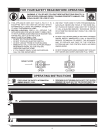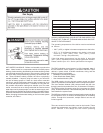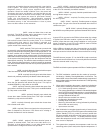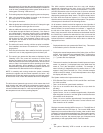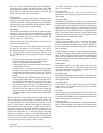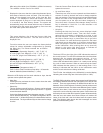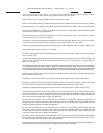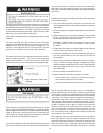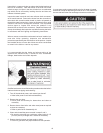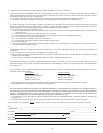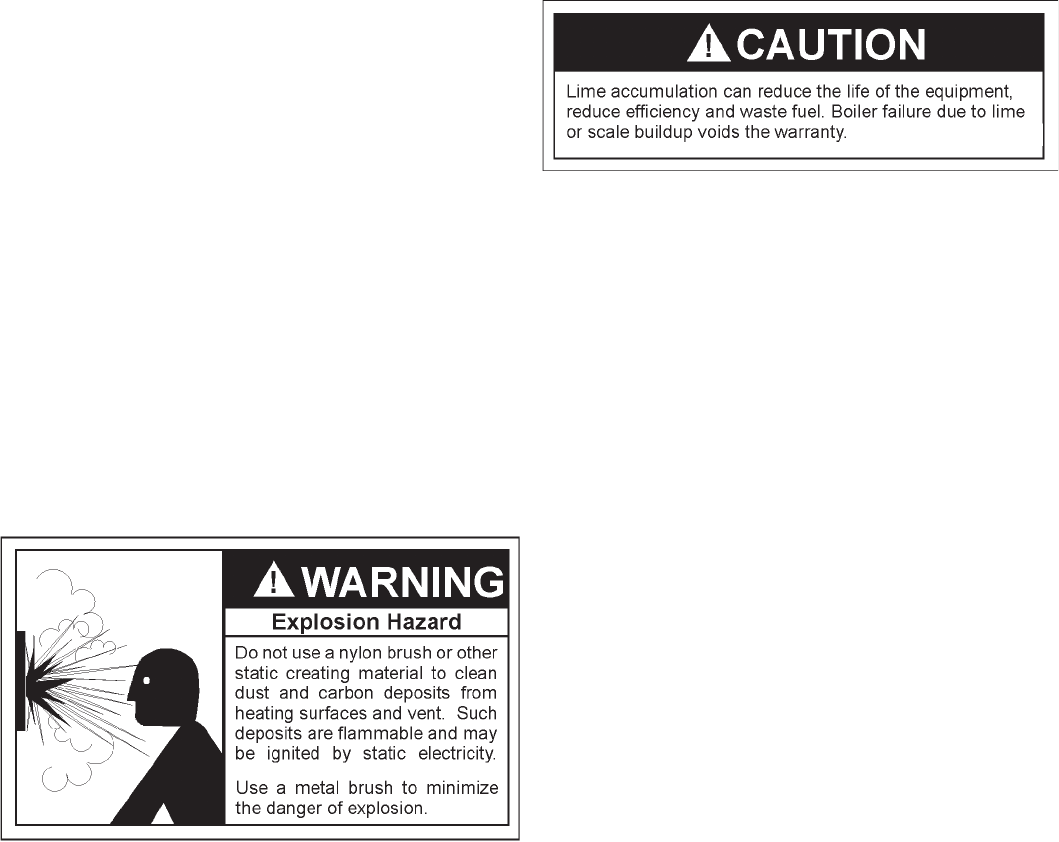
19
lines with air or water and clear or replace the blocked portions of
the line as necessary. Note that areas of the drain line which
include a sag or low spot in the line will also form a condensate
trap which can be removed by levelling the tube and does not
indicate a blocked system.
Inspect the metal vent drain and vent collector drain connectors
at six month intervals. Remove the hoses from the connections,
then check with a small wooden dowel or plastic rod passed up
through the metal connection to insure the passage is clear, using
caution to not bend or damage the connector. Call a qualified
service agent to inspect and correct the problem if any
obstructions are found in the connectors. Replace all hoses and
clamps immediately after inspection and before starting the boiler
in accordance with the Lighting and Operating Instructions. DO
NOT OPERATE THE BOILER UNLESS ALL CONDENSATE
DRAIN LINES ARE PROPERL Y CONNECTED AND WORKING .
When a means to neutralize condensate has been installed you
must also follow operating, inspection and maintenance
procedures specified by the manufacturer of the product. Inspect
the installed device to insure that it does not cause condensate
to remain in the boiler or vent for any reason.
VENTING MAINTENANCE
It is recommended that the intake and exhaust piping of the
appliance be checked every 6 months for dust, condensate
leakage, deterioration and carbon deposits.
Qualified serviceman should follow this procedure when the boiler's
intake and exhaust piping need cleaning:
1. Turn off the electrical power, and manual gas shut-off.
• Allow boiler parts to cool before disassembly.
2. Remove the vent pipe.
• Check parts and chimney for obstructions and clean as
necessary.
3. Remove burner from boiler and other metal parts as required
to clean as necessary.
• Refer to parts list for disassembly aid.
4. Clean and reinstall the parts removed in steps 2 and 3.
• Be sure the vent pipe has a minimum upward pitch of 1/4"
per foot (2cm/m) of length and is sealed as necessary.
5. Restore electrical power and gas supply to boiler.
• Check for gas leaks and proper boiler and vent operation.
HEA T EXCHANGER PREVENTIVE MAINTENANCE
In most water supply systems solids exist. As the water is heated,
these tend to drop out depositing as scale or lime. This scale must
be removed before the heat exchanger tubes become blocked.



